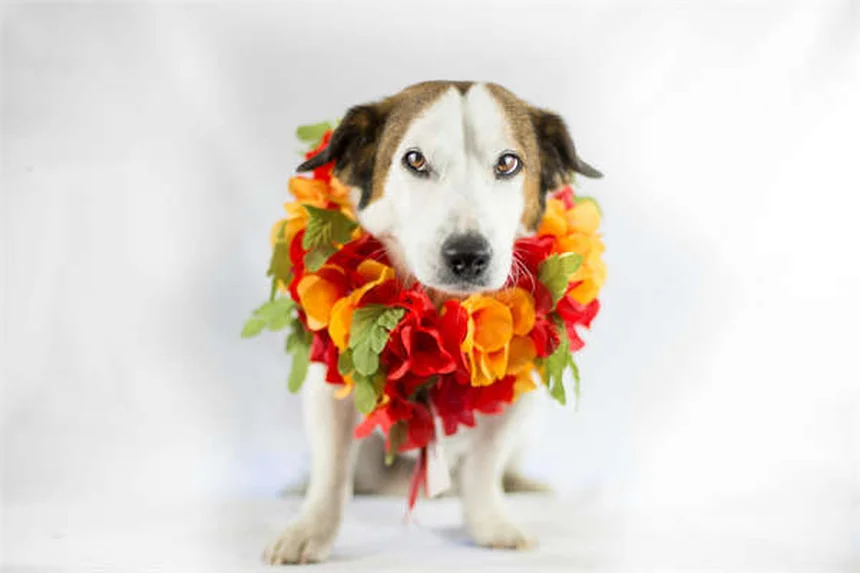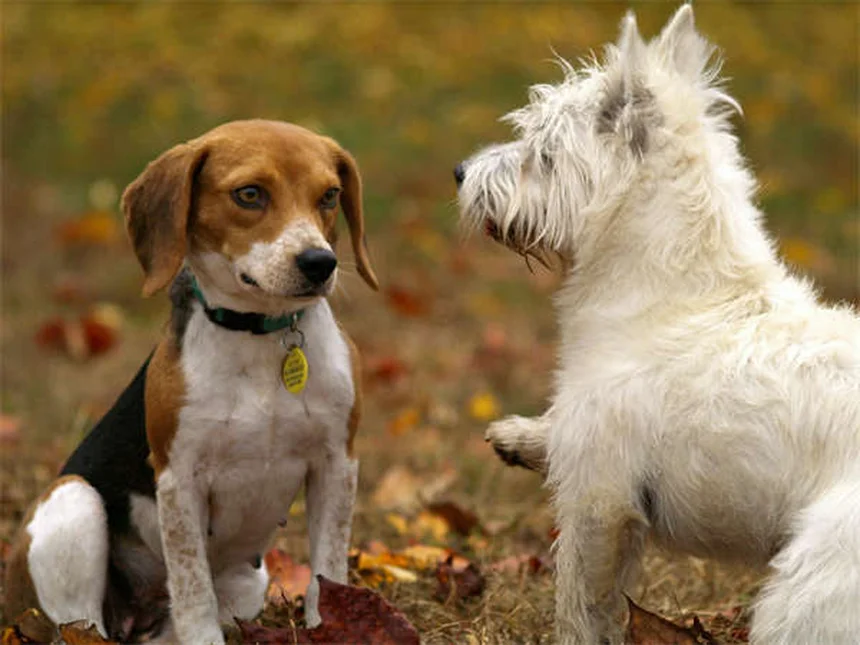What is lung cancer in dogs? The answer is: It's a serious condition where malignant tumors invade your dog's lungs, potentially spreading throughout their body. While relatively rare (only about 1% of canine cancers), lung tumors can severely impact your pup's breathing and overall health. Primary lung cancer originates in the lungs, but more commonly, we see metastatic cancer that's spread from other organs.Here's what you need to know right now: Most affected dogs are seniors (9-11 years old), and certain breeds like Boxers and Dobermans are at higher risk. The tricky part? Symptoms often don't appear until the disease is advanced. That's why we're breaking down the 7 key warning signs you should never ignore. I've seen too many cases where early detection could've made all the difference - let's make sure your furry friend gets the best care possible.
E.g. :Heartworm Prevention for Dogs: 5 Must-Know Facts to Protect Your Pet
Let me break this down for you in simple terms. Lung cancer in dogs occurs when malignant tumors develop in their lungs. Unlike harmless lumps, these bad boys can spread like wildfire through your pup's body. Imagine your dog's lungs as two spongy airbags - when cancer invades, it's like pouring concrete into those delicate tissues.
Here's how it works: When Fido takes a breath, oxygen travels down the windpipe (trachea), through smaller tubes (bronchi), and finally reaches tiny air sacs called alveoli. This is where the magic happens - oxygen enters the blood while carbon dioxide exits. Now picture tumors disrupting this perfect system - it's like putting kinks in a garden hose!
Good news first! Primary lung tumors account for only 1% of all canine cancers. But here's the catch - the lungs are popular real estate for cancer cells traveling from other body parts. Think of them as Grand Central Station for metastatic cells.
Did you know certain breeds are more at risk? Check out this quick comparison:
| Breed | Risk Level |
|---|---|
| Boxers | High |
| Doberman Pinschers | High |
| Australian Shepherds | Moderate |
| Irish Setters | Moderate |
 Photos provided by pixabay
Photos provided by pixabay
Here's where it gets interesting. About 97% of primary lung tumors are carcinomas - the bullies that start in the lung tissue itself. The most common troublemaker? Bronchoalveolar carcinoma. But sometimes, cancers from other areas (like bone or skin) decide to crash the lung party - we call these metastatic tumors.
Veterinarians grade these tumors like school papers - but instead of A-F, they use I-III. Grade I tumors are the slowpokes, while Grade III are the sprinters. Guess which ones we worry about more?
Occasionally, we see party crashers like histiocytic sarcoma or lymphoma setting up shop in the lungs. These are like the uninvited guests who show up with six friends - never a good situation!
Here's the tricky part - lung cancer in dogs is like a ninja. It often shows no symptoms until it's advanced. Many cases are discovered accidentally during routine X-rays. Talk about a plot twist!
 Photos provided by pixabay
Photos provided by pixabay
When the cancer progresses, you might notice:
While we don't know all the answers, genetics definitely plays a role. Some breeds just drew the short straw in the genetic lottery. Secondhand smoke might contribute too - so maybe don't blow smoke rings at your pup, okay?
Pollutants in the air could be accomplices in this crime. Think of it like your dog breathing in tiny villains every day. Not all dogs exposed get cancer, but it's better to play it safe.
 Photos provided by pixabay
Photos provided by pixabay
Your vet will start with chest X-rays - the canine equivalent of a treasure map. If they spot a suspicious lump, the investigation intensifies. They might use a fine needle to collect cells (FNA) - like sending in a microscopic spy to gather intel.
Ever heard of a bronchoscopy? It's basically sending a tiny camera down your dog's airways - like a submarine exploring the lung canals. Pretty cool, right?
For the full picture, vets might recommend CT scans. These give us detailed 3D images - like Google Earth for your dog's insides. It helps surgeons plan their attack if surgery is needed.
Vets stage cancer to determine how far it's spread. Stage I is like finding one weed in your garden, while Stage IV means the weeds have taken over the neighborhood. Here's how it breaks down:
For single tumors, surgery is often the first line of defense. Vets might remove part or all of a lung lobe - think of it as removing the rotten part of an apple to save the rest. The good news? Dogs can do surprisingly well with partial lung removal!
For aggressive cancers, chemo might be recommended. But here's something interesting - chemo alone usually doesn't help much with primary lung tumors. It's like bringing a knife to a gunfight.
If caught early and treated with surgery, some dogs live over two years post-op. That's like getting bonus time with your best friend! Factors affecting survival include:
Whether you choose treatment or palliative care, here are some ways to help:
This is tough to talk about, but important. In final stages, you might see severe breathing difficulties, extreme weight loss, and constant fatigue. If breathing becomes labored, it's time for immediate vet care.
Here's a question many owners ask: "Is my dog's lung cancer aggressive?" The answer depends on the tumor type and grade. Some grow slowly over months, while others spread rapidly. Your vet can give you a better idea based on test results.
Remember, early detection is key. Regular check-ups, especially for senior dogs, can make all the difference. After all, our furry friends give us their best years - shouldn't we do the same for them?
Let's talk about something we don't discuss enough - how this diagnosis hits you right in the feels. When your vet says "lung cancer," it's like getting punched in the gut. I've seen grown men cry in the exam room, and you know what? That's completely okay.
Here's the thing many people don't realize - you're allowed to grieve before anything even happens. The anticipatory grief is real, and it's messy. One minute you're researching treatment options, the next you're sobbing into your dog's fur. Pro tip: Find a support group (online or in-person) where you can share these rollercoaster emotions with people who truly get it.
While traditional treatments take center stage, let's shine some light on complementary approaches. Acupuncture isn't just for hipsters - studies show it can help manage cancer pain in dogs. And CBD oil? It might help with appetite and anxiety, though we need more research.
Ever heard of medicinal mushrooms? Reishi and turkey tail mushrooms contain compounds that could potentially boost the immune system. Just make sure you consult your vet before turning your pup into a fungi connoisseur!
Let's get real about the elephant in the room - cancer treatment ain't cheap. Here's a sobering comparison of potential expenses:
| Treatment | Average Cost |
|---|---|
| Diagnostic Tests | $500-$1,500 |
| Lobectomy Surgery | $3,000-$6,000 |
| Chemotherapy | $2,000-$5,000 |
| Palliative Care | $100-$300/month |
But here's something hopeful - pet insurance can be a game changer if you have it before diagnosis. Some clinics offer payment plans, and there are even cancer treatment grants for pets. Don't let the price tags scare you away from asking about all your options.
This is the toughest calculus you'll ever do. Is putting your dog through treatment worth it if they might only gain a few months? Here's my two cents - it's not about the calendar, it's about the sparkle in their eyes. Can they still enjoy their favorite things? That's your North Star.
You might be wondering - "Could I have prevented this?" First, stop beating yourself up. But going forward, consider these simple changes: switch to natural cleaning products, avoid walking near heavy traffic, and for Pete's sake, no smoking around your pup!
Did you know air purifiers with HEPA filters can remove up to 99.97% of airborne particles? That's like giving your dog's lungs a personal bodyguard against environmental nasties.
Here's a mind-blowing stat - 85% of lung tumors are found accidentally during routine exams. That annual check-up you've been putting off? It could literally save your dog's life. Senior dogs (7+ years) should get chest X-rays every 6-12 months - think of it as their version of a human's yearly physical.
If you've decided against aggressive treatment, let's talk about creating magical moments. Design a "bucket list" tailored to your dog's abilities - maybe it's a steak dinner, a beach trip, or just unlimited belly rubs. Capture these moments on video - future you will thank present you.
Create a comfort care plan with your vet. Pain management is key - we have amazing medications that can keep your pup comfortable without turning them into a zombie. And don't forget about mobility aids - harnesses and ramps can be lifesavers for weak pups.
This is the hardest part of pet parenthood. Here's a simple guideline: when the bad days outnumber the good, it's time to have that tough conversation. Keep a daily journal tracking three things: appetite, engagement with favorite activities, and overall comfort. The numbers don't lie.
Remember, choosing euthanasia isn't giving up - it's the ultimate act of love. As one of my clients beautifully put it: "I'd rather say goodbye a week too early than a day too late."
Grief doesn't follow a schedule. Some people find comfort in creating memorials - paw print keepsakes, photo books, or even planting a tree. Others volunteer at shelters in their dog's honor. There's no right way to grieve, just your way.
Consider writing a letter to your dog. Pour out all the things you wish you'd said, all the memories you cherish. It might sound silly, but many people find it incredibly healing. And who knows - maybe somehow, somewhere, they're listening.
Here's a question that weighs on many hearts: "When is it okay to get another dog?" The answer is simple - when you're ready. For some, that's weeks later. For others, years. Getting a new pup isn't replacing your lost friend - it's making space in your heart for more love.
If you do decide to welcome a new furry family member, consider honoring your previous dog by choosing a different breed or color. It helps avoid constant comparisons while keeping your first dog's memory special and unique.
E.g. :Types, Treatments & Symptoms of Lung Cancer in Dogs | Plains ...
A: The survival time varies dramatically depending on several factors. For dogs with early-stage, low-grade tumors that undergo successful surgery, some live over two years - that's like getting bonus time with your best friend! However, with more aggressive cancers or metastatic tumors, survival might be just 3-6 months. Here's what affects prognosis: tumor size (smaller is better), grade (I is slowest, III is fastest), and whether it's spread. The good news? Dogs who show no symptoms at diagnosis typically do better. Your vet can give you a more personalized estimate based on test results.
A: The first signs are often subtle and easy to miss. Watch for these early red flags: a persistent cough (especially if it worsens at night), faster breathing while resting, or tiring quickly during walks. Some dogs show decreased appetite or mild weight loss first. Here's what's scary - many cases are discovered accidentally during X-rays for unrelated issues. That's why I tell all my clients with senior dogs or at-risk breeds to be extra vigilant. If you notice any unusual breathing patterns or energy changes, don't wait - schedule a vet visit.
A: This is what keeps many pet parents up at night. The truth? Lung cancer itself isn't typically painful, but the complications can cause discomfort. Difficulty breathing is distressing, and if the cancer spreads to bones (causing hypertrophic osteopathy), that can be painful. The coughing fits can also be exhausting. The silver lining? We have excellent pain management options today. From anti-inflammatories to advanced medications, your vet can create a comfort plan tailored to your dog's needs. Never let your pup suffer - we can always help manage their quality of life.
A: While we can't say for certain (research is ongoing), there's growing evidence that secondhand smoke increases risk. Think of it this way - your dog's respiratory system is even more sensitive than yours. Those carcinogens in smoke? They're like tiny villains attacking lung cells daily. Studies show dogs in smoking households have higher rates of respiratory diseases. My professional advice? If you smoke, do it outside away from your pets. Better yet, consider quitting - your health and your dog's will thank you. An air purifier can also help remove harmful particles from your home environment.
A> Treatment depends on the cancer type and stage. For single primary tumors, surgery to remove the affected lung lobe offers the best chance - many dogs recover surprisingly well! Chemotherapy might follow for aggressive cancers. For metastatic cases, we focus on quality of life through palliative care: cough suppressants, oxygen therapy if needed, and medications to ease breathing. Here's my pro tip: Always consult a veterinary oncologist if possible. They can explain all options, including newer treatments like immunotherapy. Remember - treatment isn't just about extending life, but ensuring those days are happy and comfortable.
Recommended
Heartworm Prevention for Dogs: 5 Must-Know Facts to Protect Your Pet
Reverse Sneezing in Dogs: What It Is & How to Stop It Fast
How to Bathe a Cat Without Losing an Arm: 5 Vet-Approved Steps
Top 10 Longest Living Cat Breeds That Stay With You for Decades
Why Do Dogs Sleep So Much? 7 Surprising Reasons Explained
Essential Cat Vaccines: Core Shots Every Pet Parent Should Know